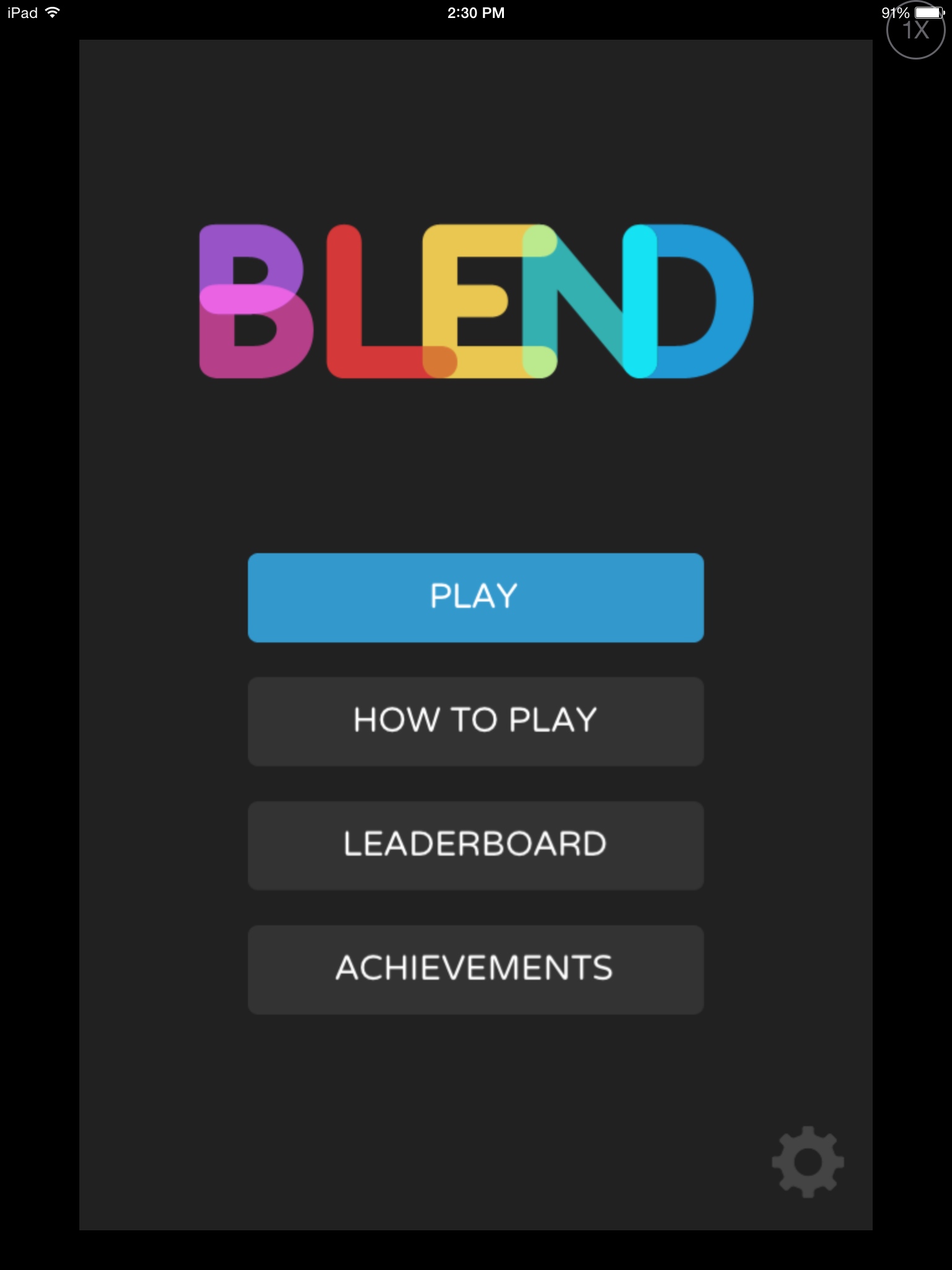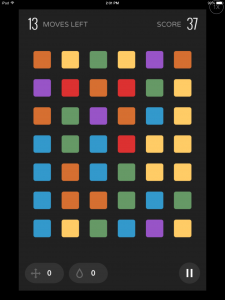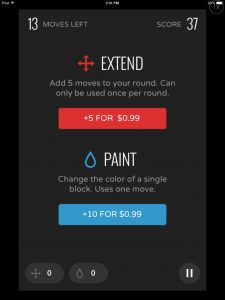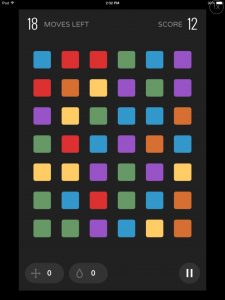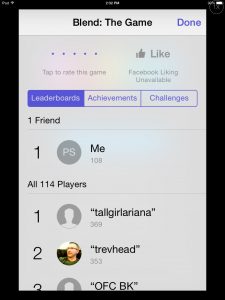[app url=”https://itunes.apple.com/us/app/blend-the-game/id880961406″]
Blend: The Game is a unique puzzle game developed by Matthew Broerman that is unfortunately brought down by its reliance on in-app purchases.
Puzzle games on mobile platforms almost always seem to be a variation on the concept of clearing a board of blocks. Blend is no exception to this rule, though it does have some uniqueness in its execution.
In Blend, blocks come in various colors and players are tasked with clearing them by tapping on a collection of three or more blocks of the same color. Once a group of blocks has been cleared, new blocks of random colors spawn at the top of the screen to fill the gaps made by the removed blocks. The more blocks you clear in one move the more points you get, and players are given twenty moves to amass the highest score possible.
Though there are many games that function identically to this, Blend manages to differentiate itself with its block fusing mechanic. Any two blocks with complementary colors can be combined to make a new block of a different color. For example, a yellow block and a blue block can be combined to make a green one. Performing these combinations doesn’t take up moves, meaning that the gameplay focus in Blend is on strategically combining blocks until the highest scoring moves can be made.
It’s a unique take on a traditional game design, and it works well. There’s a lot of strategy in the combining mechanic which helps give the game that addictive just-one-more-try feeling all puzzlers strive to achieve. The game also has a nice clean graphical style and a well polished interface, it’s almost every thing a puzzle game should be.
Unfortunately, Blend suffers from poor design in the way it deals with in-app purchases. Players can purchase the ability to change any single block’s color for free, or gain five additional moves in a round. Since chance plays quite a big role in doing well in Blend, the ability to change a block’s color is often required to be able to perform all twenty moves given without running out of possible moves. This means that it often feels like the power-up is required to properly play a full round of Blend.
The power-up that allows players to make five additional moves in a round is even more egregious, since it completely skews all of the scores on the leaderboard. With the power-up giving players twenty five percent more moves in which to amass points, it is impossible for players not using the power-up to get a score comparable to those using it.
Though not mentioned anywhere in the app itself, these power-ups can be gained through gameplay, either by reaching a high-score of two hundred or clearing ten blocks in one move. However, these are extremely difficult if not impossible feats to accomplish without the use of the power-ups themselves, meaning that luck is just about the only thing involved in getting more of these when you run out.
There is no inherent problem with a game having power-ups that are difficult to gain, but when the option to pay for these same power-ups exists, it leaves a bad taste in the mouths of the free players. If you wan’t to place on the leaderboards in Blend, your options are either to pay for power-ups or to play a lot and hope you get lucky and manage to get some. This is free-to-play done poorly, bordering on pay-to-win, and it isn’t good game design.
Despite its problems with in-app purchases, Blend is still a solid puzzle game at its core. If you’re willing to ignore the leaderboards and don’t mind playing a few unwinnable rounds, Blend still offers addicting puzzle gameplay that is worth checking out.
Blend: The Game requires iOS 5.1 or later. Compatible with iPhone, iPad, and iPod touch. This app is optimized for iPhone 5. Follow Tapscape for the latest iPhone app reviews.


